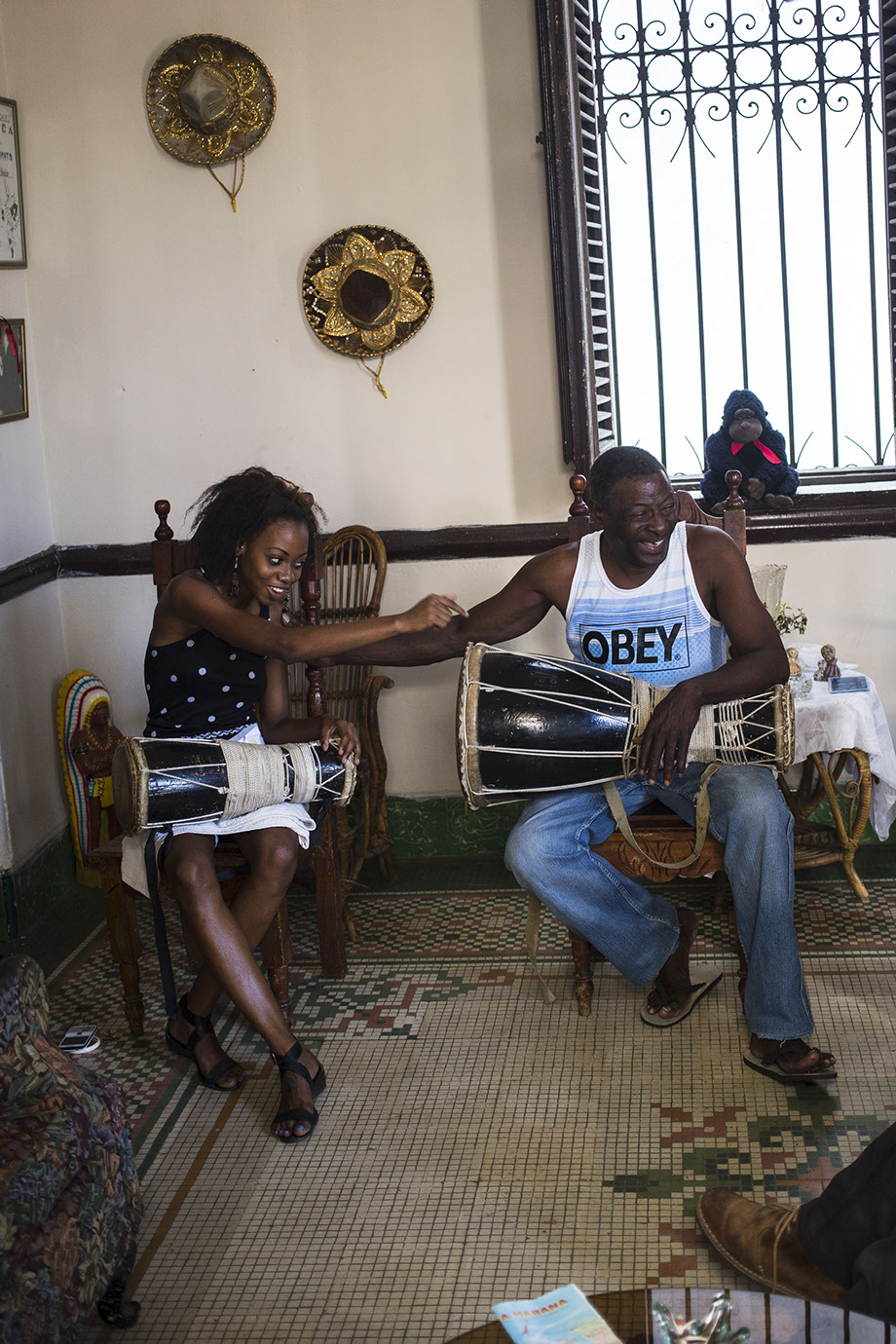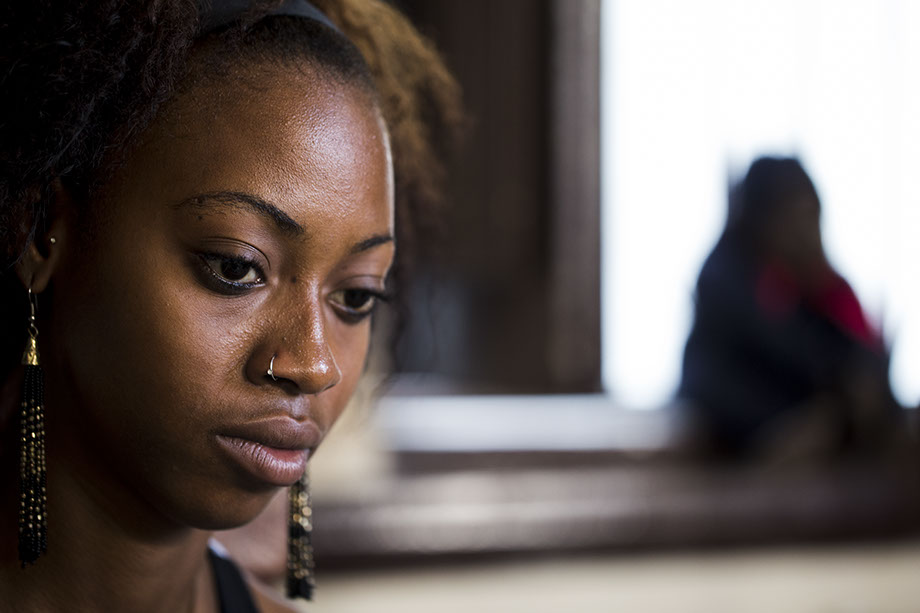

EXPERIENCING MOTION
STORY BY LORIN ANDERBERG / CASEY MINTER / KELLY WOLFRAM
"I love to sing in places where I find myself alone"
- Ami de la Caridad Díaz Martínez-
Ami de la Caridad Díaz Martínez closes her eyes, the fringe of her lashes resting against her ebony cheekbones.
She is a 19-year-old woman standing in the middle of a tangerine-colored room in Havana, Cuba. Flies buzz incessantly, capitalizing on the oppressive heat and bathing in the sweat on her brow. The morning sun glints off her nose ring, and her lithe, dancer’s limbs are uncharacteristically stilled as she prepares herself for her performance.
But behind those eyes, Martínez sees something completely different. Behind those eyes, she is Ochún, an Orisha—or spirit—of the Cuban Santeria religion.
Ochún is the merriest and most vivacious of the Orishas, who represents fertility, sensuality and love. The youngest of the spirits, she is depicted in a full dress of yellow satin, the bells at the hem of her skirt pealing as seductively as her telltale laugh.
As a performer with a folklore dance group in Cuba’s capital city, Martínez has made her mark inhabiting Ochún by effectively blending both power and grace.
She performs as a dancer in an all-female group that focuses on the religion of Santeria. They dance, drum and sing, honoring a heritage that melds the religion of African slaves who were brought to Cuba in droves with the Roman Catholic religion of the people who brought them there. It is a faith built on the pain of being ripped from ones’ home and built on the omnipresence of nature.
“I love to sing in places where I find myself alone, and I have contact with nature,” Martínez says.
As she imagines her transformation to Ochún, she begins to envision her movements, and the music. Much of her dancing is set to the percussive rhythm of the batá, an hour-glass-shaped hand drum. However, playing the batá is something that has only recently become an option for her. Traditionally, only men were permitted to play it, but that restriction has significantly loosened in recent years.
“Before, it was not approved of for a woman to play the drum,” Martínez says. “My mother never could have.”
Martínez and her dance company have fought for the right to play the batá so they can fully practice and perform the religion and tradition they love.
“Now the women are less criticized,” she says. “We are women who dance and play—this is a challenge to society. One of the goals our company has is to send a message to the world that women have the same rights as men, both in dance and in working life.”
It’s a message that seems to resonate with many Cubans. For example, the percentage of women in the Cuban National Assembly stands at 48.9 percent, making Cuba the sixth highest ranked country for female participation in politics. The United States is ranked 79th on the same scale.
To Martínez, dancing is much more than a way to move her body—it’s a way to celebrate her culture and her religion, the past and the future. Dancing is a way for her to advocate for and protect this newfound equality as well.
Her mind calms as her preparation is complete. She opens her eyes and begins to dance.


